Outdoor Activities and Adventures, Prerov

Removed from Unnamed collection
Zebracka 
Žebračka is an example of a floodplain forest, which has been preserved to the present as a type of hard meadow in the Bečva river basin. It has a size of 235ha and is located on the outskirts of Přerov. In this locality, the most typical wood species are oak, lettuce, hornbeam and ash. The northern part flows through the artificial canal Strhanec, which during its existence has gained a nature close to nature. http://www.pavoj.wz.cz/priroda/zebracka/zebracka.html
Map
Explore more places related to this search:

Removed from Unnamed collection
Moravsky Kras 
The largest and most beautiful karst area in central Europe is a place where visitors have their breath taken clean away. The main attraction here is the famous Macocha Abyss, some 138m deep and steeped in terrifying myths and legends. Without doubt the Moravian Karst is one of the natural wonders of the Czech Republic, which will wow every visitor. http://www.czechtourism.com/c/moravian-karst/
Map

Removed from Unnamed collection
Luzanky Park 
Lužánky Park was established in 1786 as one of the first public parks in Central Europe. In the middle of the park, you can visit the Renaissance Revival pavilion from 1855 by Viennese architect Ludwig Förster, which has held balls, concerts, celebrations, and various expositions over the years. Today, the building goes by the name Kasino and serves mainly as a leisure-time centre for children.
The park as we know it was created in 1840 by city gardener Antonín Šebánek. In addition to the park’s precious trees, visitors may enjoy watching colourful fish in the stream and cute piglets – a favourite attraction for the park’s youngest visitors. There’s also a playground for children to enjoy and get some energy out.
Lužánky is an ideal place for sporting as well as social activities, as locals come here to jog, play tennis, pétanque, and volleyball, exercise in an outdoor gym, or get a bite to eat at one of a number of nearby restaurants. Visitors can also use a public grill for barbecuing. https://www.gotobrno.cz/en/place/park-luzanky/
Map
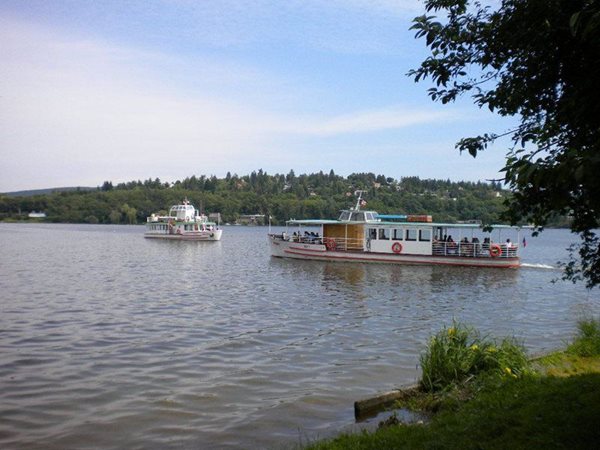
Removed from Unnamed collection
Brno Reservoir 
A popular recreational resort and an ideal place for all kinds of water sports. The banks are lined with sport facilities, restaurants, pubs and kiosks. The regular water transport line serving the route Brno - Veverská Bítýška is in operation every year from April to September. The visitors coming from the city centre can get to the reservoir by public transport. http://www.czechtourism.com/c/brno-reservoir/
Map
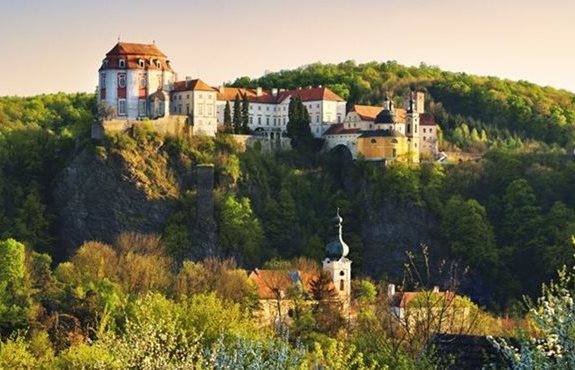
Removed from Unnamed collection
Podyji National Park 
Even though it is the smallest Czech national park, the Podyjí National Park is among the most important natural sites in Central Europe. Here you will find an exceptionally well-preserved river valley in a richly wooded landscape full of breathtaking scenery. http://www.czechtourism.com/c/podyji-national-park/
Map

Removed from Unnamed collection
Bratislava Castle 
The former seat of the rulers, today the symbol of Bratislava and the seat of the Museum of History. There is a wonderful view of the city and the neighbouring countries from its 47-metre-high crown tower in which royal coronation jewels used to be deposited. https://www.visitbratislava.com/places/bratislava-castle/
Map
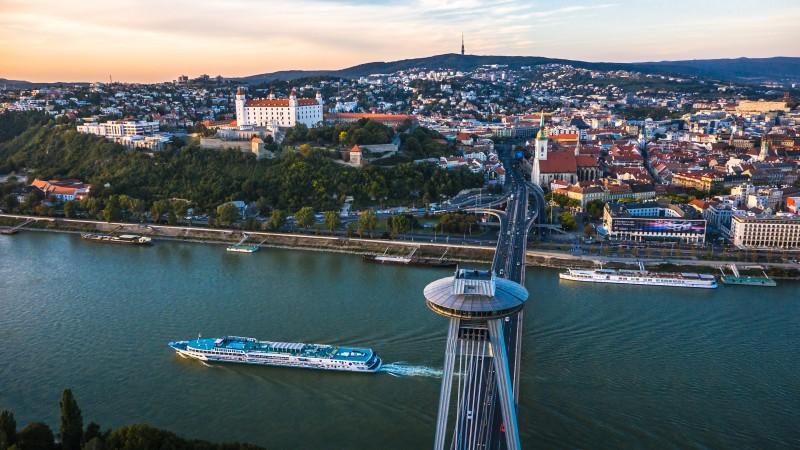
Removed from Unnamed collection
UFO 
A unique observation tower, a bar and a restaurant are located at the very top of the SNP bridge pylon.
“Floating” on the pillar of the New Bridge (Nový most), this restaurant offers a pretty unconventional experience, from where you can enjoy a unique panoramic view of Bratislava and its surroundings from above. The restaurant interior is elegantly furnished and the menu contains a wide variety of different international dishes. The restaurant has a total of 140 seats and reservations are possible. Offering an impressive view, this restaurant is a landmark of Bratislava and represents Slovakia in the World Federation of Great Towers. https://www.visitbratislava.com/places/ufo/
Map
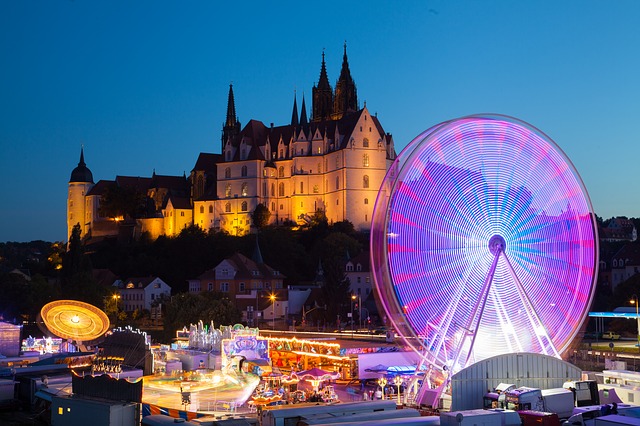
Removed from Unnamed collection
Prater 
An amusement park for many, place of nostalgic dreams for some, oasis of greenery for almost everyone – and the location of the Giant Ferris Wheel, one of Vienna’s most famous symbols. The Vienna Prater is in season from March to October. But the world-famous Giant Ferris Wheel and a few other attractions are open all year round.
The Vienna Prater is entertaining and exciting, but it can also be relaxing and quiet. One part of it contains attractions ranging from a nostalgic merry-go-round to an ultra-modern roller coaster. In the other area, known as the “Green Prater,” one finds widespread meadows to lie on, shady trees, and quiet paths. The motto is to have fun and enjoy yourself.
Today, the Green Prater is a paradise for walkers, runners, bicyclists and horseback riders, and is highly appreciated as a large leisure area within the city limits. To get an overview of this green oasis in the city of Vienna, one best takes the Liliputbahn, a miniature railway spanning more than three miles. https://www.wien.info/en/sightseeing/prater
Map

Removed from Unnamed collection
The Garden Tulln 
From April to October, Garden Tulln is the main attraction in town for gardening enthusiasts. Garden Tulln opened as a garden show for the province in 2008 and continues to be a showcase project in Europe today with its 70 ecologically maintained extravagant model gardens!
Garden Tulln provides ideas for amateur gardeners, an excursion destination for nature lovers and an adventure land for families. It is a green paradise ideal for strolling and marvelling, playing and entertaining, relaxing and rejuvenating!
Besides the diversity of its individual model gardens, this garden show also has the following attractions in store for all generations:
Treetop trail: View of model gardens and the Danube landscape from 30 meters in the air;
Tips and tricks: Help and advice from gardening pros and nature-in-the-garden experts;
Nature playground: Playing and exploring on the biggest natural adventure playground in Lower Austria. http://erleben.tulln.at/en/garden/garden-city-tulln/garten-tulln/
Map

Removed from Unnamed collection
Schoenbrunn Zoo 
Schönbrunn Zoo in Vienna is the world’s oldest zoo still in existence and has already been voted Europe’s best zoo on five occasions. Today the Zoo at Schönbrunn is considered one of the best and most modern zoos in the world. Each year more than two million visitors come to see the panda baby, newborn elephants and many other rare animals. More than 700 kinds of animal live here - from the Siberian tiger to koalas and rhinoceros. Highlights are the giant rainforest house, the large South American enclosure and the ORANG.erie, home to Vienna's orangutans.
New and extensive enclosures and animal houses are added each year. But the zoo's historic charm is always preserved. The zoo is part of the Schönbrunn UNESCO world heritage site. In the summer of 1752, Emperor Franz I. Stephan von Lothringen, Maria Theresia's husband, took his royal guests to the newly constructed menagerie in the park at Schönbrunn Palace for the first time. Ever since then, the world's oldest zoo has been operating in Vienna. https://www.wien.info/en/sightseeing/sights/imperial/schoenbrunn-zoo
Map
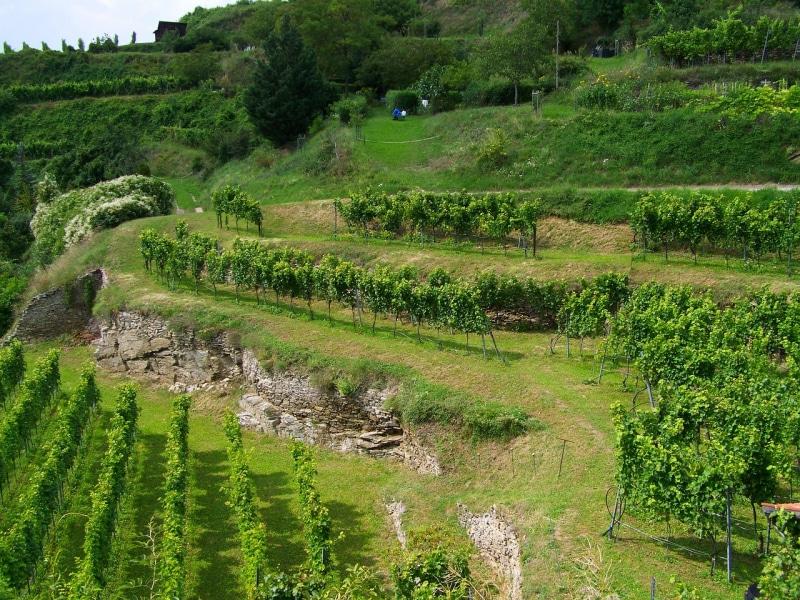
Removed from Unnamed collection
Winzer Krems 
Krems is a famous wine region and produced one of the finest bottles since 1983.
Winzer Krems, Sandgrube 13, is one of the best-known wine addresses in Austria. Its setting is unique: at the gateway to the World Heritage cultural landscape of the Wachau, one of the most beautiful stretches of river valley in Europe. Pleasurable in the truest sense of the world.
he centre of this region is the small picturesque town of Krems, situated in the Danube valley, marking the eastern border of one of Europe's most beautiful river landscapes - the Wachau.
Most of the vineyards in Krems are placed on sun exposed primary rock and loess terraces with difficult access. The basis for the quality wines from Krems is provided by the special soil an climate conditions. The influence of the river Danube produces a mix of warm air from the South-East and cool spicy air from the North. From this micro-climate and from the soil of wLoessW or the prehistoric rock the vines create that distinctive aroma full of fruit which distinguishes wines from WINZER KREMS. https://www.winzerkrems.at/en/
Map

Removed from Unnamed collection
Wachau Cruise 
Between late March and early November, the proud red and white DDSG fleet departs for relaxed cruises through the Wachau region, a UNESCO World Cultural Heritage, up to 3 times per day in each direction. A cruise in the Wachau region is always a special experience – no matter if in spring when the apricot and other trees are in full bloom, in summer when you can enjoy bright blue skies, or in autumn when you can watch the afternoon sun bathing the vineyards in red and gold. Our dense timetable gives you many options of experiencing the region from the water between Krems, Dürnstein, Spitz, Emmersdorf and Melk. https://www.ddsg-blue-danube.at/wachau/wachauschifffahrten/?lang=en
Map
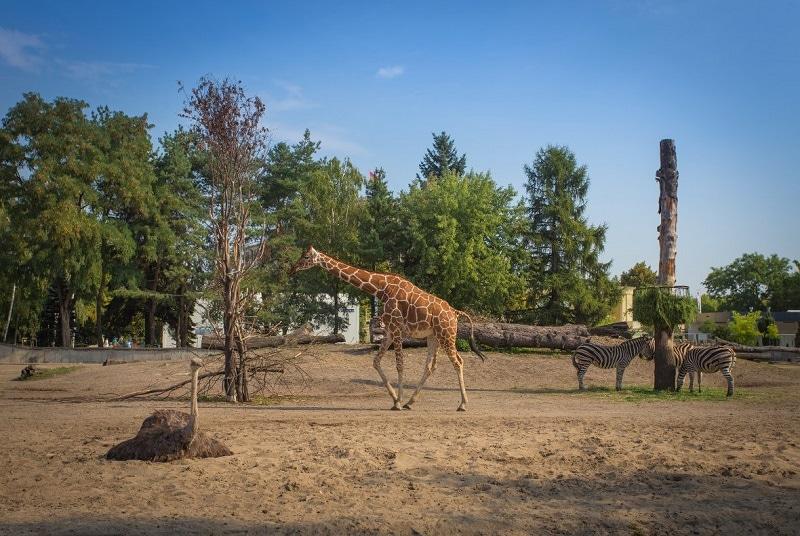
Removed from Unnamed collection
Wroclaw Zoo 
The Zoo in Wrocław was created in 1865 and had a dozen hectares of surface. Today on 33 ha live 10,000 animals.
Zoo in Wrocław is the oldest and the richest in fauna in Poland. It is possible to see the animals from every continent and environments, for example in Madagascar, Sahara or Europe Pavillons.
In the last few years many new enclosures have been built, for example for bears and wolves. There are also new animals, among which very rare species like okapi. https://visitwroclaw.eu/en/place/zoo-wroclaw
Map
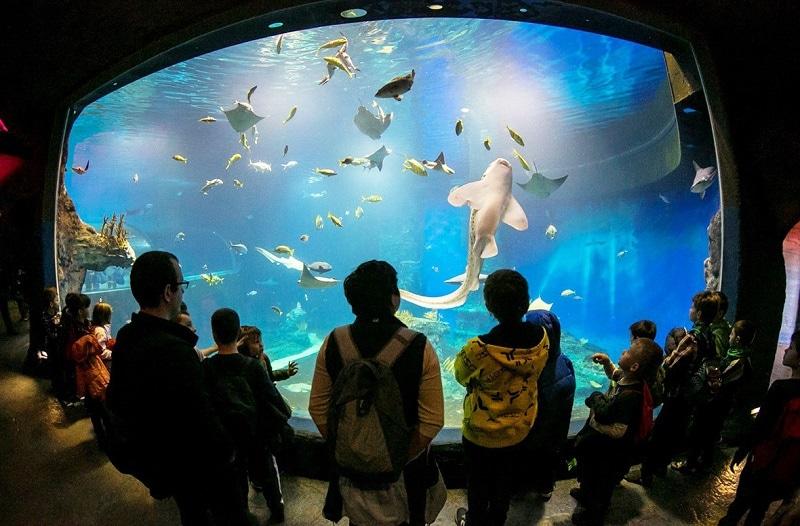
Removed from Unnamed collection
Afrykarium 
Wrocław Afrykarium is the only theme oceanarium devoted solely to the African fauna. On average, 2.5 thousand people visit it on the weekdays.
The idea of Wrocław Afrykarium is to present the selected ecosystems of Africa, including: The Red Sea - the coral reef and the fish of the reef; The Red Sea beach - desert tortoises; The African Great Lakes (Tanganyika and Malawi) - about 50 various species of fish - cichlids; The Mozambique Channel - rays, hammerhead sharks, zebra sharks and many more. https://visitwroclaw.eu/en/place/afrykarium
Map
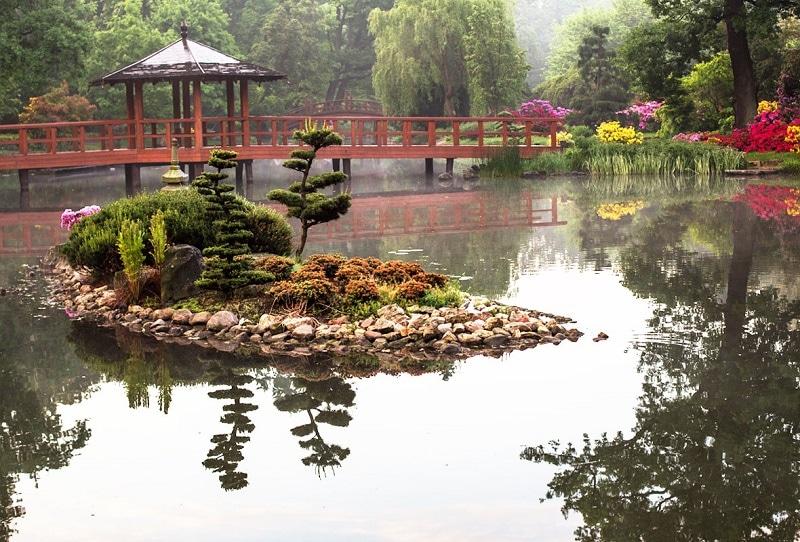
Removed from Unnamed collection
Wroclaw Japanese Garden 
It is one of the most popular places for walks. Apart from a few hundreds of original plants, trees, bushes and flowers, there are also Japanese buildings: the gate and the tea pavilion.
One of the attractions of the Garden is a pond with enormous carps and other species of fish. The Garden often hosts events like tea perking, concerts and open-air happenings.
The Japanese Garden was created in the beginning of the 20th century, on the occasion of the Global Exhibition in 1913. It was an initiative of count Fritz von Hochberg, who employed a Japanese gardener Mankichi Arai. After the Exhibition it was dismantled but the plants and the arrangement of alleys and the pond remained the same.
The idea of renewing the Japanese Garden in Wrocław appeared in the 90s. The reconstruction lasted three years, the specialists from Japan came to assist, but the Garden did not survived for long. Two months after the inauguration, the Garden was destroyed by the flood. 70% of the plants were lost. The next opening of the Japanese enclave took place in October 1999. https://visitwroclaw.eu/en/place/japanese-garden-wroclaw
Map
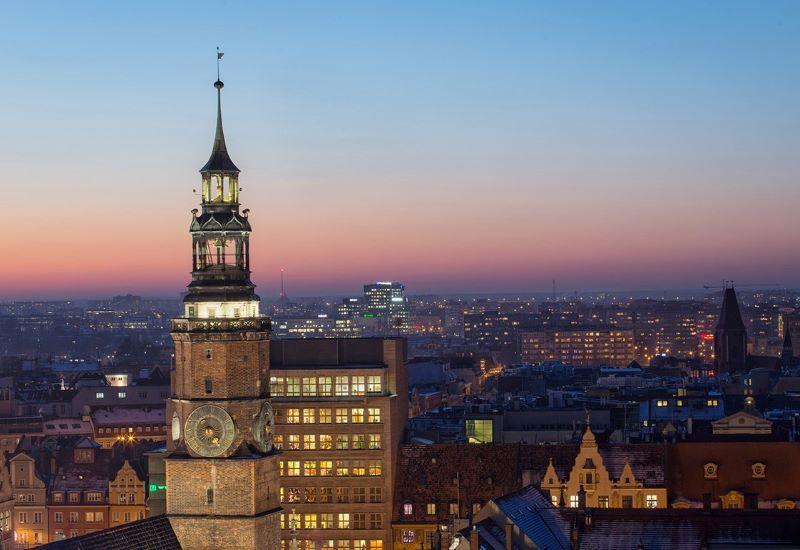
Removed from Unnamed collection
Wroclaw Old Town Hall 
Old Town Hall is a unique Gothic building in European architecture. It has 2 storeys, 3 parts with a rectangular building of the councils, which is attached to the northern wall and a square tower. Located in the city centre, it was being built for about 250 years (13 - 16th century). It used to serve as the seat of the city authorities and the court.
The oldest part of the Town Hall was built ca. 1299 (according to the sources). This part is called consistorium (Latin: place of gatherings) and now belongs to the building. The consistorium has two parts: the underground hall covered with the ceiling and the Western tower. After buying the rights of the voyt, the meaning of the Council was much bigger. The growing number of the Council members demanded a new building. In the years 1328-1333, near the consistorium a new, smaller building was built - praetorium (Latin: the seat of the leaders). The building is the northern part of the Town Hall, near the square with the whipping post.
Since the very beginning the Town Hall has witnessed many important historical events and has been a representative building where the authorities invited their honourable guests. This tradition is still alive. The most important world leaders, monarchs, clergy and artists have been invited into the Town Hall. In the cellar of the building there is one of the oldest restaurants in Europe - the legendary Piwnica Świdnicka. https://visitwroclaw.eu/en/place/old-town-hall-in-wroclaw
Map

Removed from Unnamed collection
Park Szczytnicki 
The park with an area exceeding one hundred hectares is outstretched between Różyckiego, Paderewskiego, Kopernika and Olszewskiego streets.
The first park in this place was established by L. Hohenlohe, the commander of the city garrison, in the area of the then-existing village of Szczytniki in the suburbs of Wrocław in 1783.
The park with an area of 16 hectares was maintained in English style, but it was heavily destroyed by Napoleon’s soldiers in 1806. In 1833, the recreational areas in this part of the city were enlarged – not only did the park become bigger, but also a racing track was created south of it and functioned there till the beginning of the 20th century. The current appearance and richness of Park Szczytnicki owes much to Peter Joseph Lenne – a royal gardener who arrived in Wrocław from Berlin. At the end of the 19th century, a dyke system was established. Later, at the turn of the 20th century and on the occasion of the Exhibition of the Century in 1913, Park Szczytnicki was enriched with objects that have remained interesting till today and are important points of sightseeing routes. In 1913, the wooden church of Jan Nepomucen was moved to Wrocław and established in the eastern part of the park. Built at the turn of the 17th century, the building had been previously located in Stare Koźle. https://visitwroclaw.eu/en/place/park-szczytnicki
Map
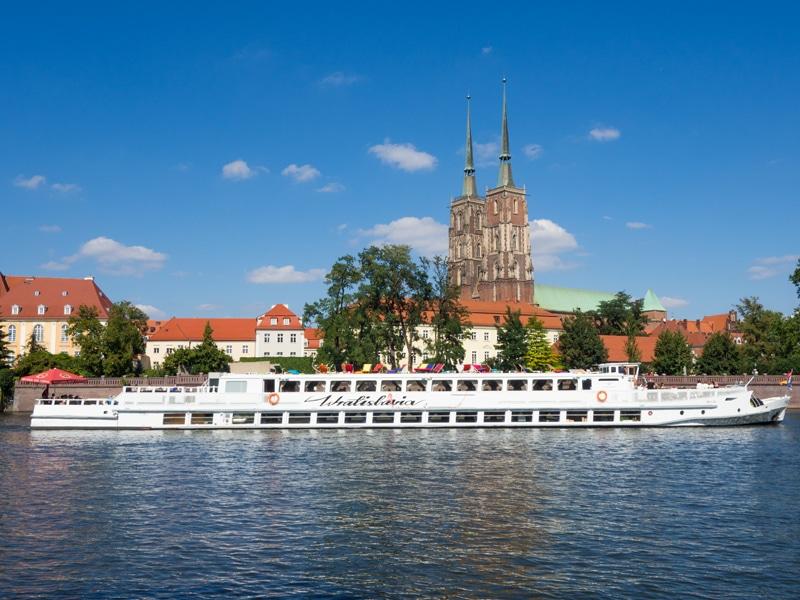
Removed from Unnamed collection
Wratislavia Floating Restaurant 
Wratislavia is the largest fluvial passenger vessel in Poland. The middle deck contains a bar and a restaurant. The lower deck is a wedding and banquet hall, which serves as a bistro during cruises. At the top, there is an open solar deck with colourful pillows and sun loungers that provides complete relaxation and comfort. The Wratislavia vessel cuisine impresses above all with its sophisticated menu, including exquisite meats such as duck and guinea hen or excellent steaks served with original side dishes based on Polish vegetables, fruit and herbs. The comfort of our guests during cruises is guaranteed by our experienced crew, wonderful waiters and bartenders, and the best cooks. https://visitwroclaw.eu/en/place/wratislavia-floating-restaurant
Map

Removed from Unnamed collection
Palace Park 
The Palace Park, with the Leopoldine Temple and the Orangery at the heart of it, is a jewel.
The Palace Park is one of the most important landscaped gardens dating back to the 19th century. It covers an area of about 50 hectares and forms the northern edge of the city and goes all the way down to Bergstrasse and up into the Leitha Mountains.
The park comprises four ponds (Leopoldine pond, Obelisk pond, Herzerl pond and Engine pond), uncounted exotic trees and bushes.
The Leopoldine Temple built by Moreau in 1806 is a circular temple with Egyptian-style columns erected right above the Leopoldine pond. Inside the temple there is the statue of "Leopoldine", made in 1805 by the famous Italian sculptor Antonio Canova. https://eisenstadt-leithaland.at/palace-park.html
Map
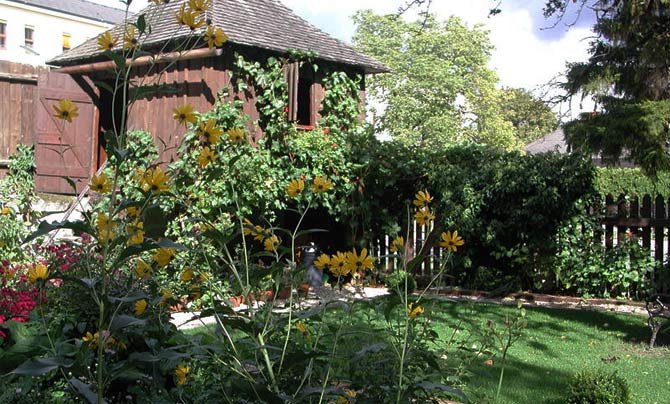
Removed from Unnamed collection
Haydn's Herb Garden 
The Haydn's family garden hut with its herb gardens represents a true rarity.
When Joseph Haydn bought his house in the city in 1766, he also acquired the little garden by the hospital, situated outside the city walls, and the little wooden hut.
Haydn transformed this small piece of land in a flower and herb garden and not only came there to seek peace and quiet, but also to compose.
The remains of the kitchen and herb garden have been transformed into a show garden with plants that were en vogue in Haydn's times. It invites the visitors to learn more about century old recipes and herbal secrets. https://www.eisenstadt-leithaland.at/en/sightseeing/sightseeing/haydns-herb-garden
Map
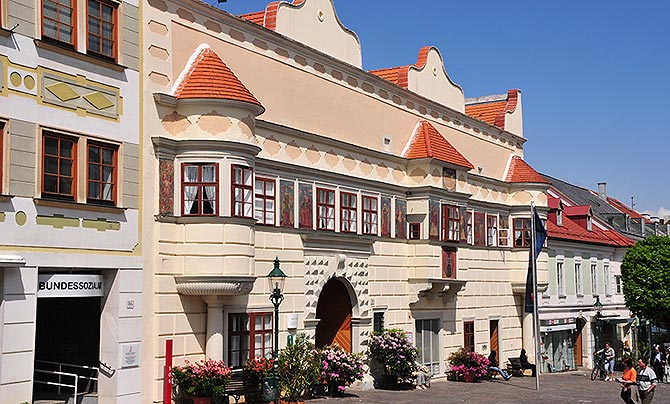
Removed from Unnamed collection
Eisenstadt City Hall 
The structural fabric of the town hall dates back to 1560 and was changed after the city had been elevated to a royal free-trade zone in 1648.
The architectural basis is thought to go back to early renaissance. The diamond-shaped ashlar of the portal points to this era, too.
The one-storey building with a broad front featuring two round oriels on the sides and a rectangular oriel in the centre has been refurbished during the baroque; a massive attic has been built on top of it during the same period. The murals discovered in 1926 probably also go back to the early renaissance period and have been adapted to fit the baroque tastes later on. In 1949 Rudolf Holzinger repainted them by closely sticking to old patterns. He also completed the missing pictures. https://eisenstadt-leithaland.at/city-hall.html
Map

Removed from Unnamed collection
Old Town Square 
Where does the true heart of Prague beat? On the Old Town Square of course! It is precisely here that winding lanes of the Old Town run, in order to spill out onto the most beautiful square in Prague. The elegant tower of the Town Hall with the world famous astronomical clock, the proud silhouette of the fairytale Týn Cathedral, the monumental Church of St. Nicholas and countless multicoloured houses of many styles lend this place a unique atmosphere, which will captivate all those who decide to take a look at its charm.
Over the thousand years of its existence, the Old Town Square has been a silent witness to important events in Czech history. History left its mark here in the form of important demonstrations, executions but also weddings, tournaments and political meetings. http://www.czechtourism.com/c/prague-old-town-square/
Map

Removed from Unnamed collection
Charles Bridge 
Prague’s oldest bridge was built to replace the Judith Bridge that had been badly damaged by floods in 1342. The Stone, or Prague, Bridge, called Charles Bridge since 1870, was begun in 1357 by Charles IV and was completed in 1402. The bridge is built of sandstone blocks, flanked at each end by fortified towers (Lesser Town Bridge Towers, Old Town Bridge Tower). From 1683 to 1928, 30 statues of saints were carved to decorate the bridge, the most famous of which is the statue of St John of Nepomuk. https://www.prague.eu/en/object/places/93/charles-bridge-karluv-most?back=1
Map
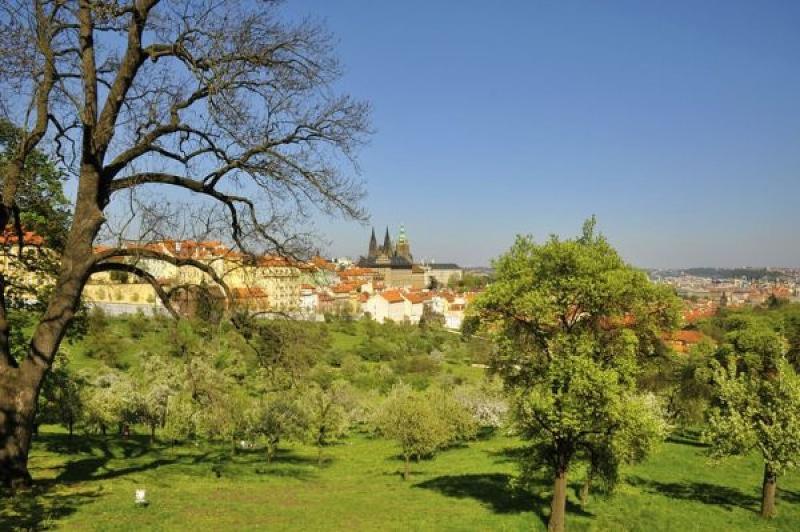
Removed from Unnamed collection
Petrin Hill 
Overlooking the glorious city of Prague is the equally beautiful Petřín Hill, one of the former vineyards of King Charles IV. This is the place to go and relax under a blooming cherry tree during a clear spring day or smell the fragrant beauties in the lovely rose garden on a lazy summer night, and it is also the perfect place to capture the wonder of Prague via your camera. It is a steep walk up Petřín, so if you wish, you can take the cool funicular up to the summer restaurant or all the way to the top of the hill. Petřín Hill also features a miniature Eiffel Tower (built for the for the 1891 Prague Exposition), Petřín Lookout Tower, one of the best observation points in Prague, a mirror maze for children and adults alike, mysterious walking paths that lead to secret gardens, fountains, a traditional Ukrainian wooden church, and even a small waterfall by the adjoining Kinsky garden. A perfect place for a day of relaxing or even a picnic, Petřín Hill is busiest on May 1st, when lovers go and kiss under cherry trees to seal their romance forever. https://www.prague-stay.com/lifestyle/review/224-petrin-hill
Map
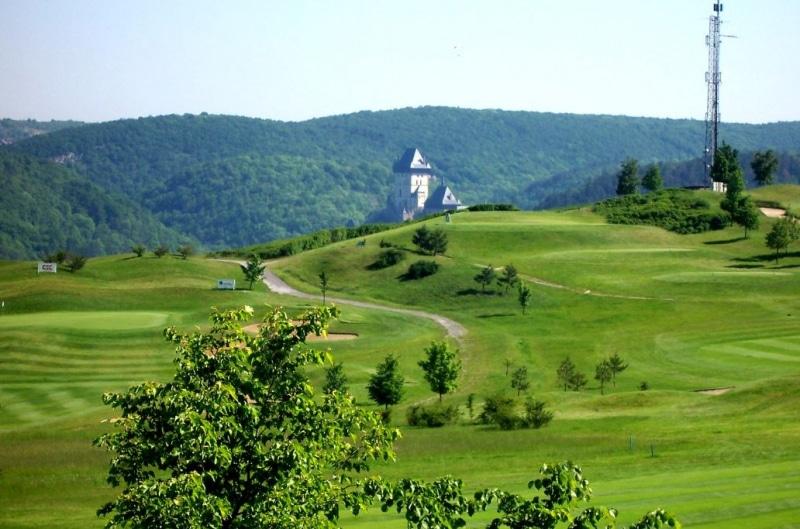
Removed from Unnamed collection
Karlstejn Golf Resort 
What golfer could resist playing a renowned 27-hole golf course with the romantic backdrop of the majestic Karlštejn Castle? A rolling landscape with forests and limestone rocks is the ideal setting for a leisurely game of golf. The Karlštejn Golf Resort is also within easy reach of the capital city of Prague. Test for yourself the accuracy of the course architects’ motto: “An easy bogey but a difficult birdie.” The prestige of the course is underscored by the fact that it was a venue for the European PGA Tour in 1997. Perhaps you won’t break the record of Patrik Sjöland, who finished in just 61 strokes, but you’ll certainly never forget the golf course and scenery here. http://www.czechtourism.com/s/karlstejn-golf-resort/
Map

Removed from Unnamed collection
Margaret Island 
Walking the length of the island takes about 20 minutes, but most visitors spend time at the Hajós Alfréd and the Palatinus outdoor pools. The Palatinus water park is a popular place in the summer, especially on the weekends. The 11 outdoor pools, including two for children, are in a beautiful setting. If it is too cold to go for a swim, an island tour introduces relics hailing back to the island's religious origins, including a 12th century convent and ruins of a Franciscan and a Dominican church. During summer months, bicycles, inline skates and 'bringóhintó', a four-wheeled bike for four, are available for rent. Since vehicles are prohibited, the island is a fantastic escape from the bustle of the big city and a great place to work out, swim a few laps, or go for a run.
Other attractions on the island include the Centennial Memorial which commemorates the 100th anniversary of Budapest, a Japanese Garden, a tiny zoo, a music fountain, and an octagonal water tower, built in Art Nouveau style in 1911. The outdoor theater hosts operas, concerts and plays during summer.
The thermal water on Margaret Island is famous for its healing effects. The natural, thermal water running beneath the island was first brought to the surface in 1886. In addition to its healing power, a day at the Danubius Health Spa is also a great way to relax and unwind. http://visitbudapest.travel/guide/budapest-attractions/margaret-island/
Map
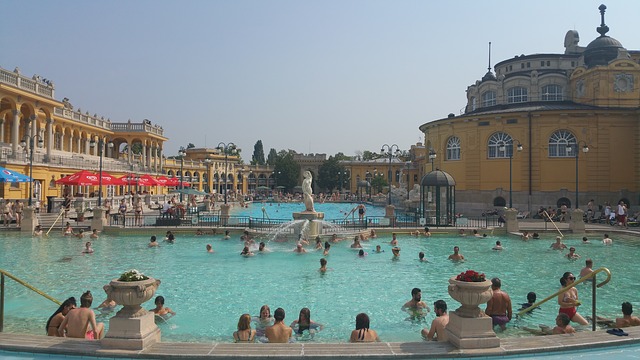
Removed from Unnamed collection
Szechenyi Thermal Bath 
With 21 pools, Széchenyi Bath is one of the largest bathing complexes in Europe. Its adventure pool features a water chute, underwater jacuzzi, neck shower and bubble deck. In addition to traditional medicinal services, the entrance fee also includes wellness services such as the fitness gym, saunas and underwater gymnastics. https://www.budapestinfo.hu/szechenyi-thermal-bath-and-swimming-pool-1
Map
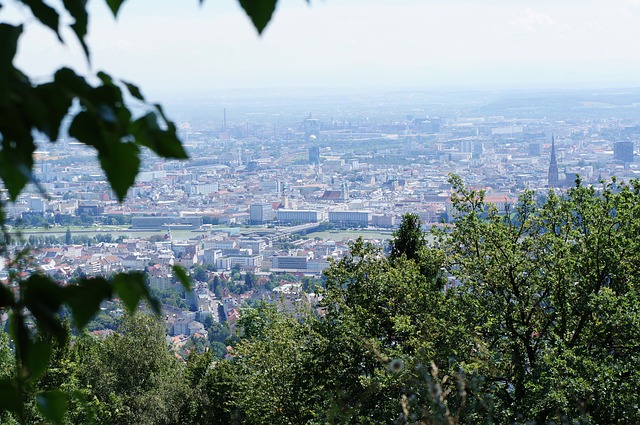
Removed from Unnamed collection
Poestlingberg 
Let's set off up Linz's local mountain! An excursion to Pöstlingberg is an unforgettable experience – not only for children! Whether families visit the pilgrimage basilica, the viewing platform, the Hartlauer Photo Gallery, the zoo or the realm of fairy tales and dwarves – the Grottenbahn, they're sure to have a great time high above Linz. Or you can enjoy the breathtaking view of the city by the colourful Danube as a cosy twosome! Change your perspectives on Linz! https://www.linztourismus.at/en/leisure/discover-linz/worth-seeing/top10/adventure-world-poestlingberg/
Map
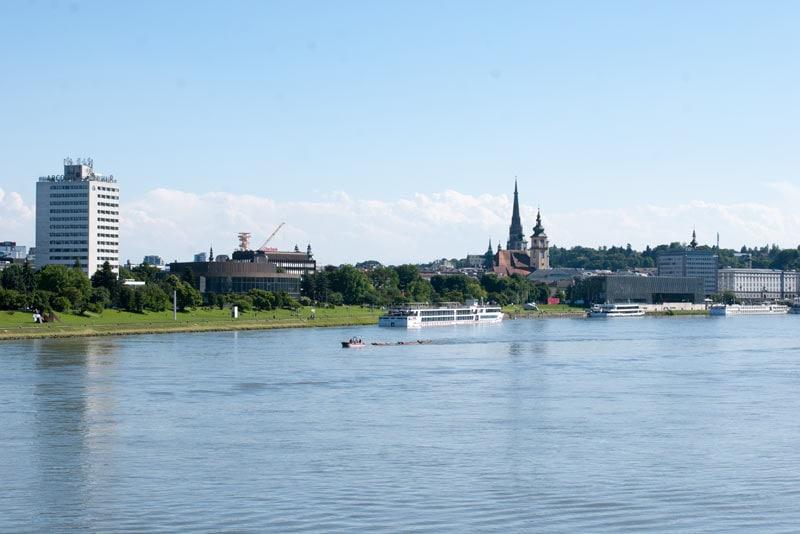
Removed from Unnamed collection
Boat ride on the Danube 
Linz changes your perspectives! Would you like to see how? Where better than by discovering the city from the Danube! You can also go on excursions into the beautiful Danube region from Linz, or take a tour or an evening cruise where you can listen to music and dine in the restaurant. The shipping companies based in Linz invite you to unwind on a boat trip on Danube, to escape the stress of everyday life and to relax on the Danube. https://www.linztourismus.at/en/leisure/discover-linz/activities/round-tours/boat-cruises/
Map
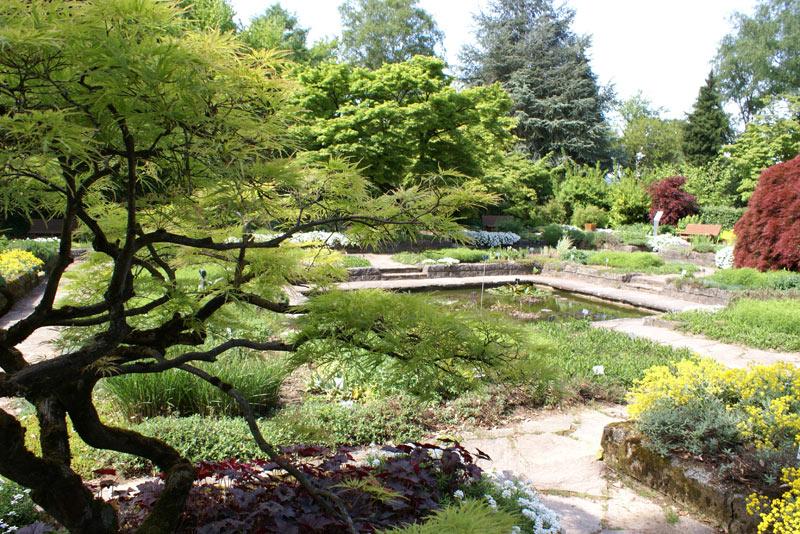
Removed from Unnamed collection
Botanical Garden Linz 
The Botanical Garden on the "Gugl" are among the most beautiful in Europe. Over an area of 43,000 m², there are more than 10,000 various types of plants to admire. In the five greenhouses the splendour of exotic specimens predominates the garden’s unique collection of cacti, the finest in Europe.
The natural conditions allow the exhibited plants to be grouped in complete landscapes, so that visitors can imagine they are in the middle of the plant’s natural habitat. https://www.linz.at/english/tourism/921.asp
Map
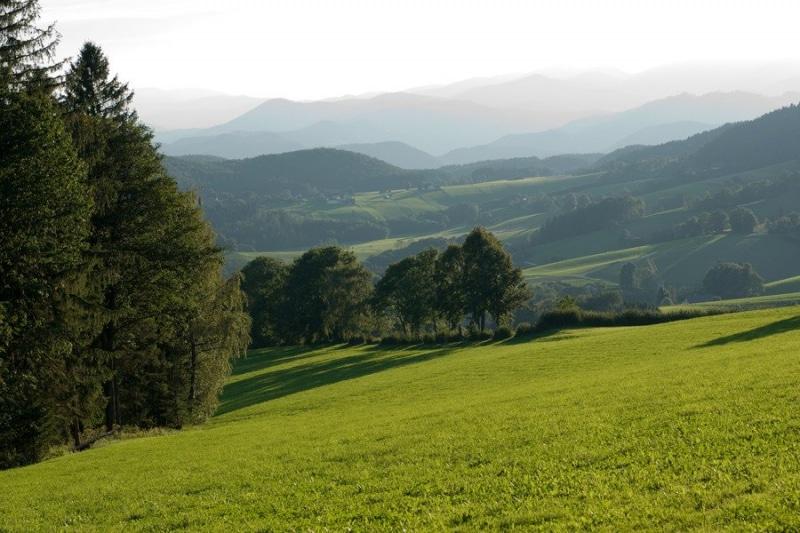
Removed from Unnamed collection
Schoeckl Mountain 
At 1445 metres not exactly the highest, but the Schöckl, local mountain of Graz, is an extremely popular destination. Featuring everything from steep slopes to an extended plateau, it holds an almost supernatural fascination for visitors. Many hike around it several times per week, ascend on their mountain bikes or treat themselves to the comfortable cable car from St. Radegund, all with a view to rising above workaday concerns for a real highlight.
In terms of its geology, the Schöckl is a limestone mountain with a core of crystalline rock. At the interface of permeable and impermeable rock, springs come to the surface. Thanks to radioactive springs and healthy air, the village of St. Radegund on the southern foot of Schöckl became an internationally renowned spa in the 19th century. https://www.graztourismus.at/en/see-and-do/sightseeing/trips-around-graz/schockl-mountain_af-1271
Map
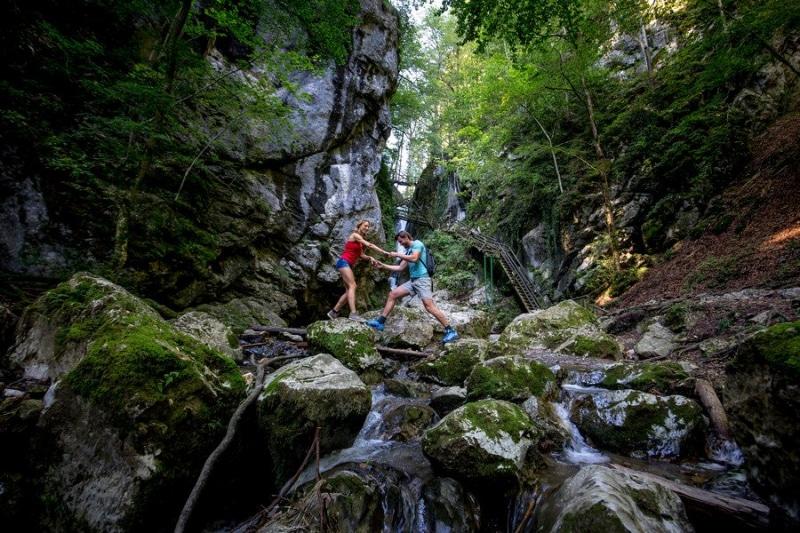
Removed from Unnamed collection
Kesselfallklamm 
The countryside immediately around Graz is wild and romantic. Among the natural attractions hidden away here are narrow gorges and gullies, through which busy streams rush. The beautiful Kesselfallklamm is like a little sister to the mighty Bärenschützklamm. Well secured steps allow you to explore this romantic gully comfortably with children too. At its northern end is the town of Semriach, a health resort popular for its air quality and treasured as a wonderful patch of Styria.
The Kesselfall gorge, the most spectacular section of the Rötschbach stream, has been accessible since 1904. The Kesselfall circle trail (R3) starts at the Sandwirt restaurant in Augraben. A pictorial sign will show you the way: a man falling into a pot (Ger. "Kessel"). Fresh from the spring, the water rushes and roars over waterfalls, in rapids and through pools. From the highest of the falls, the water plunges in cascades over a 38m drop. Thanks to more than 50 ladders and bridges, in all, about 1,800 rungs, you can experience this marvel up close. On the upper reaches of the gorge, where the Rötschbach stream is silently murmuring, the circle trail turns to the right. Walking steeply uphill, you will first reach an unusual rock formation called "Stone Gate" and will pass a cave, before going downhill and finishing the tour in the valley at Sandwirt. In one and a half hours of walking you would have covered 2.7 km and an altitude difference of 200m. https://www.graztourismus.at/en/see-and-do/sightseeing/trips-around-graz/kesselfallklamm_af-1272
Map
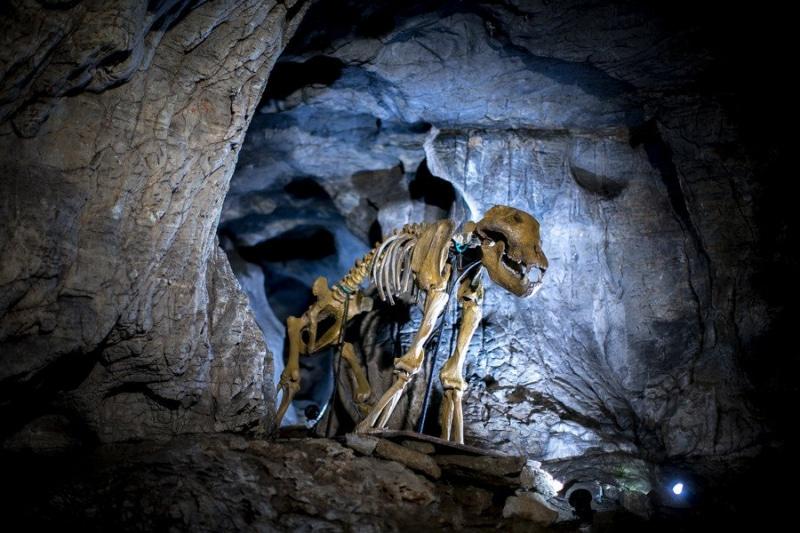
Removed from Unnamed collection
Lurgrotte Cave Peggau 
Stala‘c’tite from the ‘c’eiling, stala‘g’mite on the ‘g’round. This mnemonic can help you to identify the wonderful stone formations at the Lurgrotte, Austria’s largest dripstone cave. Here calcium mineral deposition over millions of years has yielded enchanting natural artworks both fragile and massive, with fantastic names meaning prince, giant and grand candle stick. You can explore this fascinating cavern complex accompanied by an expert guide, starting from either Peggau or Semriach.
The first person daring to enter the depths of Lurgrotte was the Italian cave scientist Max Brunello. In 1894 he discovered the Great Dome. This huge hall with an area of 120m by 80m and a height of 40m is among the biggest of its kind in central Europe and can be reached from the Semriach entrance. During guided tours a special atmosphere is created in the chamber by dramatic sound and lighting effects. Along the approximately 2km trail accessible from Semriach you can marvel, for example, at the forty-ton "giant" being probably the thickest hanging stalactite in the world. https://www.graztourismus.at/en/see-and-do/sightseeing/trips-around-graz/lurgrotte-cave-peggau_af-1213
Map

Removed from Unnamed collection
Adventure Park Graz 
Just on the outskirts of Graz there’s an exciting park, offering all manner of adventures and opportunities to explore your limits. At Abenteuer Park Graz there’s a forest climbing park, tightropes on which to balance; you can try archery, climb piles of crates and explore nature discovery trails. Here the wisdom of Confucius applies: “Tell me and I will forget. Show me and I will remember. Involve me and I will understand.” https://www.graztourismus.at/en/see-and-do/sightseeing/trips-around-graz/adventure-park-graz_af-1227
Map





